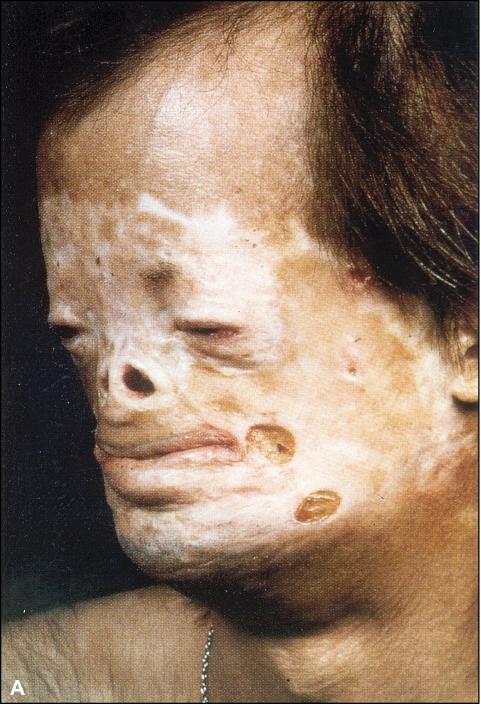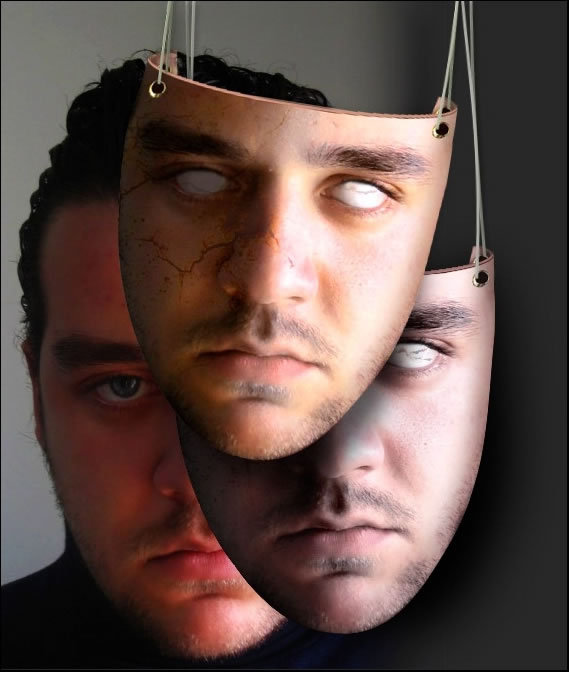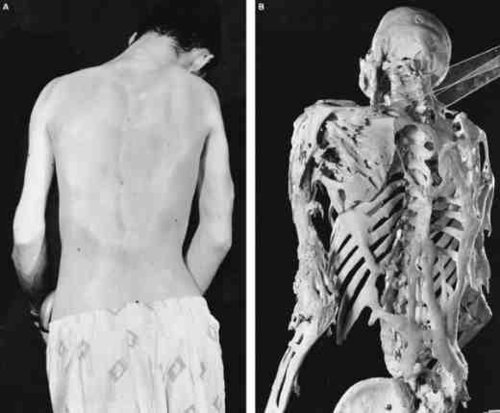Below are 10 of the weirdest, most rare diseases on the planet.
10. Porphyria

Porphyrias are a group of rare inherited/acquired disorders which affect enzymes involved in the production of porphyrins and heme (the pigments in red blood cells).
Symptoms include severe abdominal pain, vomiting, neuropathy and mental disturbances. Discolouration of the skin occurs after exposure to the sun due to the accumulation of excess porphyrins near the surface of the skin.
9. Grave's Disease

Grave's disease is an autoimmune disorder that leads to overactivity of the thyroid gland. The thyroid gland controls metabolism which is critical for regulating mood, weight, mental, physical and energy levels.
The disease is caused by an abnormal immune system response which in turn causes the thyroid gland to produce too much thyroid hormone. Symptoms include anxiety, breast enlargement, reduced concentration levels, eyeballs sticking out, insomnia and weight loss.
8. Proteus Syndrome

Proteus syndrome is a congenital disorder that causes skin overgrowth and atypical bone development, often accompanied by tumors over half the body.
Children are born without any obvious symptoms and start to develop deformities as they age. The skull, limbs and soles of the feet are often the most affected areas and the disease does not cause any learning impairments.
7. Argyria

Argyria is caused by over-exposure to chemical forms of silver. The major symptom of the condition is blue skin. The disease is not physically harmful, but severely disfiguring. In humans and animals, silver accumulates in the body over time and chronic intake of silver products increases the risk of argyria.
6. Capgras Delusion

The Capgras Delusion is a disturbing disorder in which an individual believes that a person close to them (friend, spouse, parent, etc.) has been replaced by an identical-looking imposter.
The delusion often occurs in patients diagnosed with paranoid schizophrenia and also with people suffering from brain injury or dementia. The delusion has also been associated with diabetes, hypothyroidism, migraine attacks and in one isolated case, ketamine.
5. Leontiasis ossea

Leontiasis ossea or 'Lion Face Syndrome' is characterised by an overgrowth of the facial and cranial bones. The maxilla (fusion of two bones that form the upper jaw) is affected, its' size progressively increasing and thus affecting the mouth, nose and its accessory sinuses.
The optic nerve is compressed by an overgrowth of the bone leading to complete loss of sight. Nasal respiration is also often affected.
4. Neurofibromatosis

Neurofibromatosis is a genetically-inherited disorder where the nerve tissue grows tumors that may cause significant damage by compressing nerves and other tissues. Cellular elements proliferate excessively forming tumors and melanocytes (melanin producing cells) also function abnormally resulting in disordered skin pigmentation and cafe au lait spots.
3. Trimethylaminuria

Trimethylaminuria is a rare metabolic disease also known as 'fish odor syndrome'. It causes a defect in the normal production of the enzyme flavin containing monooxygenase 3 which helps the body to convert trimethylamine from precursor compounds in food digestion into trimethylamine oxide. The fishy smelling Trimethylamine then builds up and is released in sweat, urine and breath.
Symptoms include a moderate smell that varies in intensity. The disease is more common in women and it is thought that female sex hormones aggravate symptoms. Other than this, sufferers appear typically healthy.
2. Fibrodysplasia ossificans progressiva

Often referred to as 'Stone Man Syndrome', Fibrodysplasia ossificans progressiva is an extremely rare disease of the connective tissue. A mutation of the body's repair mechanism causes fibrous tissue (muscle, tendon, ligament) to be ossified (laying down a new bone material) when damaged.
Symptoms include being born with big toes, missing joints and tumor-like lumps then gradually appear.
1. Pica eating disorder

The Pica eating disorder is characterised by an appetite for non-nutritive substances like clay, chalk, dirt or sand. To be considered Pica, the unusual eating habits must last for more than one month at an age where eating such substances is considered developmentally inappopriate.
It can lead to intoxication that can cause physical and mental impairment and intestinal obstruction. The disease is linked to maternal deprivation, family issues, parental neglect, pregnancy, poverty and is often seen in pregnant women, small children and people with developmental disabilities like autism.
No comments:
Post a Comment